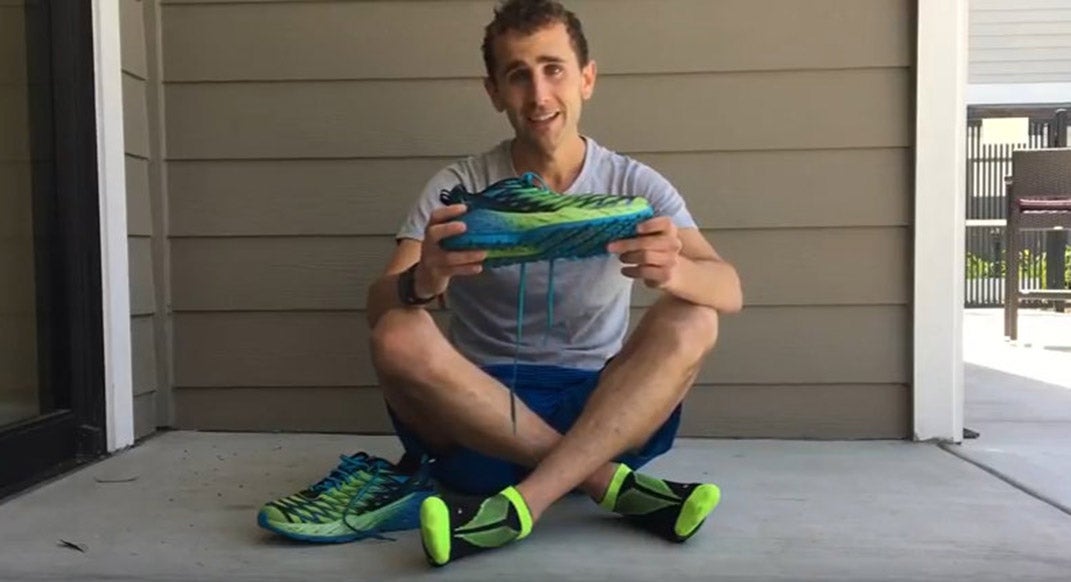How to Lace Your Trail-Running Shoes

My whole running life, I had tied my shoes the wrong way. It took an embarrassing mid-race incident for me to realize my mistake.
At the 2017 Fourmidable 50K, which was also this year’s U.S. 50K Trail Championships, I was running at the front of the lead pack at mile eight, feeling happy as a clam. Unlike a joyous clam though, I was not prepared for the mud. While running through some clam-approved muck, my shoe got sucked right off my foot.
Max King passed and said, “Oh, sorry, that sucks,” as I dug around in the muck trying to find it.
After the race, I couldn’t understand what I had done wrong. My shoes fit perfectly and I tied them tightly—so tightly that I couldn’t untie them after the race and ended up cutting off the laces entirely. So where did my shoe-tying acumen fail?
The answer is in the mysterious extra hole at the very top of the shoe, near the ankle. I had always assumed that that hole was like an ill-advised piercing from high school—everyone can see it, but no one talks about it. I was so wrong.
That extra hole can be used to “lock in” your foot, preventing slippage on steep or muddy trails. Apparently lots of people already know about this!
Using the “lock-in” technique is especially valuable for people with feet shaped like mine—a narrow heel (and cankles from years of sprains). Traditional tying methods make it almost impossible to keep laces tight around the heel without cutting off circulation to the foot. “Lock-in” lacing lets you keep your foot secure while avoiding tying your shoes too tightly across the ankle and mid-foot bones, which can contribute to stress injuries or tendinitis.
Tips and Tricks for Lacing your Trail-Running Shoes
1. Don’t tie your shoelaces too tightly over the metatarsals.
The little piggies need to breathe, and you don’t want to asphyxiate them needlessly. Too-tight lacing around the mid-foot can cause tendinitis, especially around the big toe. One pro athlete I ran with in law school didn’t even lace over her midfoot for fear of aggravating an old stress fracture. Think snug, not tight.
2. When using the lock-in technique for first time, be sure to wear socks, start with a short run, or take chafe-prevention measures.
The lock-in technique makes the heel of the shoe contact your skin in a slightly different way than usual. If you run long right away, if you are running sockless or without chafe-prophylaxis, the lock-in method can cause damage. An ounce of lubricating protection is better than a pound of Neosporin cure.
3. Double knot your shoes and tuck-in your laces.
I am not an expert on shoelace tying (I still use bunny ears), and am lucky to have made it past Velcro. But I do know that little is more frustrating than shoes that chronically come untied. After using the lock-in technique, tie your shoes as normal, but make sure the knot is tight and hide the big loops so you won’t trip on them. If it’s wet, make the knot even tighter, because mud can ruin the best of knots.
So there you have it, an entire article and a video on tying your shoes. Fortunately, there is no need for an article on potty training. Or is there?
David Roche runs for HOKA One One and NATHAN, and works with runners of all abilities through his coaching service, Some Work, All Play